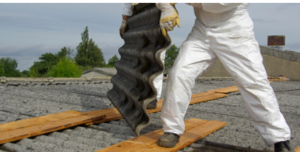They are using telephone interviews with removalists, assessors and EHOs across Australia. It was found that most asbestos products remain in the Australian built environment.
 It was also reported that soil contamination remains a future risk from the continued redevelopment of residential areas. In addition, do-it-yourself home renovators may cause contamination through incorrect handling of ACM or the release of fibres and dust. For more information about the asbestos removal Adelaide, click here.
It was also reported that soil contamination remains a future risk from the continued redevelopment of residential areas. In addition, do-it-yourself home renovators may cause contamination through incorrect handling of ACM or the release of fibres and dust. For more information about the asbestos removal Adelaide, click here.
Why is Asbestos Removal Important?
Asbestos is a dangerous substance that should only be handled by licensed professionals. Asbestos removal involves removing asbestos-containing materials (ACMs) from a building or structure. Disturbed or destroyed ACMs can release asbestos fibres, which are then inhaled into the lungs and can cause many health issues.
Using a professional asbestos testing company to test your home is essential before any work on your property starts. The test results will indicate whether your home contains asbestos and, if so, what kind.
If your asbestos test results return positive, you’ll need to hire a specialist to identify, sample, and remove the asbestos. A reputable company will also perform air monitoring during the process.
Spectra Group has extensive services, including inspection, testing, risk assessment, registers, encapsulation and asbestos removal. They are certified hazard management specialists with a Class A friable licence. They can service both domestic and commercial properties across New Zealand.
While asbestos materials don’t pose a health risk when undisturbed, all contractors working with asbestos-containing products must do so safely. It includes encapsulating all materials that contain asbestos before completing a worksite. Or more information about asbestos removal Adelaide, click here.
This study utilised qualitative interviews with EHOs and removalists to explore current practices and identify future exposure risks in the Australian built environment.
Asbestos Testing
Many older homes in Adelaide and South Australia have asbestos-like components, particularly walls and roofs. When undisturbed, such materials pose no threat. However, once they are disturbed, their tiny fibres become airborne and can cause serious health problems. For this reason, it is always wise to get an asbestos testing service before beginning any significant renovations.
Once the testing results are available, you can devise an appropriate abatement strategy. It may include covering the material with plastic sheeting to contain the dust and using PVA and water during removal to stop the fibres from becoming airborne. Children are especially vulnerable to breathing in these tiny particles because of their shorter latency period.
Asbestos Removal
Licensed asbestos removalists remove and dispose of asbestos from homes and businesses, including dismantling, cleaning, wrapping and transporting to accredited waste dumps. They must also report any air monitoring results. Or more information about asbestos removal Adelaide, click here.
Asbestos was used in various building materials, such as insulation, water, drainage and flue pipes, flooring, cladding and fencing. In most cases, the asbestos was a type of fibro sheeting or cement.
The risk of exposure to asbestos increases with the amount of work undertaken. Home renovators should only carry out small removal and maintenance jobs if licensed. In some states and territories, you must have a licence to remove more than 10m2 of non-friable asbestos.
Asbestos Disposal
Asbestos is dangerous if inhaled; extra precautions must be taken when handling, transporting and disposing of it. Only licensed removalists can take non-friable asbestos waste to accredited landfill sites. They are also required to monitor airborne asbestos levels while the job is in progress and at completion.
The most common asbestos products removed are bonded asbestos flooring, wall linings in bathrooms and laundries, corrugated fencing and water tanks. However, brittle asbestos insulation and eaves linings are often found in older homes.
Asbestos was once used in many different building applications, including roofing, cladding, fencing and insulation. It was a very popular material in Australian homes built prior to 1990, and it is likely that some of these houses still contain asbestos-containing materials (ACM). Asbestos is a naturally occurring silicate mineral that, when disturbed, releases tiny fibres into the air that can be inhaled. It can cause various health issues, including pleural plaques, asbestosis and mesothelioma.